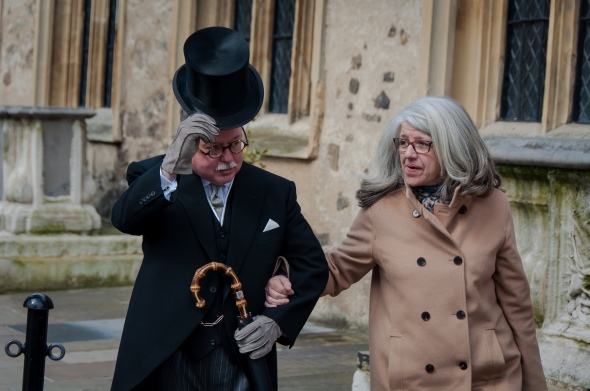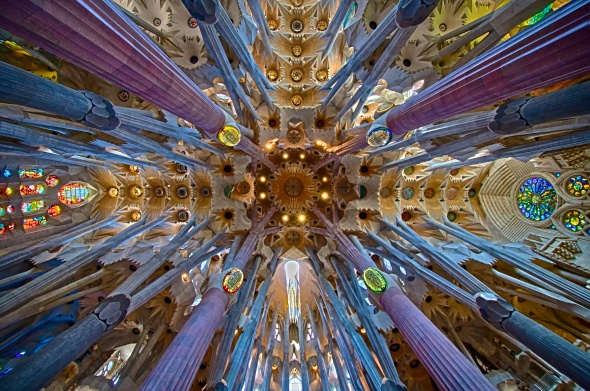Choir and Apse, St Nicholas Cathedral – Prague, Czech Republic.
Motherland Tour II/ Czech Republic
(click here to redirect to stop #1)
St Nicholas Choir and Apse, Prague, Czech Republic.
The Church of St Nicholas is a excellent example of High Baroque architecture. Built between 1704-1755, it is one of the most valuable Baroque buildings north of the Alps. Three generations of great Baroque architects – father, son and son-in-law – worked on the church: Kryštof Dientzenhofer, Kilián Ignác Dientzenhofer and Anselmo Lurago. The Baroque organs have over 4,000 pipes up to six metres in length and were played by Mozart in 1787. Mozart’s spectacular masterpiece, Mass in C, was first performed in the Church of Saint Nicholas shortly after his visit.
Baroque was a period of artistic style that was popular during the High and Late Middle Ages (15th- 17th centuries) and is characterized by drama, rich color, and dramatic contrast between light and shadow. It used exaggerated motion and clear, easily interpreted detail to produce drama, tension, exuberance, and grandeur in sculpture, painting, architecture, literature, dance, theater, and music.
Baroque vs Gothic:
Compare this image to my last post, St Vitus Cathedral Choir and Apse, which is a Late Gothic Cathedral (started in 1344) . This style of architecture flourished during the High and Late medieval period (11th – 14th centuries), and incorporated soaring towers, spires, ribbed vaults, and flying buttresses which enabled the use of thinner walls and larger windows than previously feasible during the Romanesque architecture of the early middle ages.
Which style do you prefer?
Vltata River – Prague
Motherland Tour II/ Czech Republic
Vltata River, Prague
I have dropped behind posting since going and returning from holiday. I am going to get the rest of these Prague pics posted so I can get on to something else…but I’m still holding on to what I think are the bet two. Will post them soon (last). In the meantime, here is a view up the Vltata River.
Čechův Bridge – Prague (My 100th Post, TYVM! )
Motherland Tour II/ Czech Republic
Čechův Bridge is the shortest bridge on the Vltava river in Prague. It is named after Svatopluk Čech (1846 – 1908), a Czech writer, poet and journalist. This 169 m long bridge was constructed of stone (pillars) and iron (arches) between 1905 and 1908. The roadway was made of wood until 1961. As the only Art Nouveau style bridge in the Czech Republic, it is protected by the state.
Street Musician – Prague
Motherland Tour II/ Czech Republic
Every Old World capital city has their favorite local homegrown composer who’s music you can hear throughout the town in flavors ranging from cathedral performances to street string quartets to wandering minstrels, and Prague is no exception. This street musician on the Charles Bridge was ringing out some hauntingly beautiful Antonin Dvořák pieces, who was from Nelahozeves (near Prague, then part of Bohemia in the Austrian Empire, now Czech Republic).
The Crossing, St Vitus Cathedral Ceiling – Prague, Czech Republic.
Motherland Tour II/ Czech Republic
St Vitus Cathedral ceiling at the crossing of nave and transept, Prague, Czech Republic.
Roman Catholic Gothic Cathedral was founded on 21 November 1344 . This cathedral is an excellent example of Gothic architecture and is the biggest and most important church in the country. Located within Prague Castle , it contains the tombs of many Bohemian kings and Holy Roman Emperors.
Charles Bridge, Prague
Motherland Tour II/ Czech Republic
Charles Bridge over the Vltava River. Commissioned by King Charles IV in 1357, Prague’s most stunning bridge spans 16 arches and is lined with 30 Baroque statues of religious figures.
Imagine Peace
Motherland Tour II/ Czech Republic
Lennon Wall, where “young alcoholics, mentally deranged, sociopathic, and agents of Western capitalism” would come to voice their grievances against communism and oppression during the ’80s. At that time, western music and western symbols were banned in what was then Czechoslovakia.
Motherland Tour II/ Czech Republic
First Post of 2015!! Happy New Year !
First of all, I have been delinquent in posting because of the painful switch I am currently making from Aperture to Photoshop. I think that it is time to take the plunge, now that Aperature will no longer be supported. So Photoshop has had a strangle hold on all my “photo time”….so I may now just try to throw lots of pics and less text up on posts just to get them out.
But I digress….
As mentioned in my prior Motherland Tour Sicily series, I am an American expat currently living with my family in Switzerland. One of my goals while we are living in Europe is to bring my children to visit the places where their ancestors were born. Recently I had the opportunity to visit the Czech Republic with my family to visit the homelands of my children’s Great-Great Grandparents. The trip was especially exceptional because my father was able to join us from the United States on our journey, a journey that he and my mother had taken ME and MY siblings on in the mid 1970’s (then known as Czechoslovakia, behind the “Iron Curtain”) when I was a boy.
First stop..Valasske Klobouky…where a surprise party of extended (way extended) family awaited us on arrival! Some of these people I had met 37 years ago!!!















